Greek Summer School
Orthoptera Sound System (GSS – OSS)
Are you...
We invite you to an exciting journey into the world of Orthoptera and bioacoustics!
Κόνιτσα, Ελλάδα, 22-28 Ιουλίου 2025
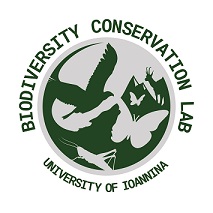
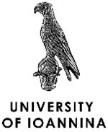




The Greek Summer School is revolutionizing Orthoptera research in Europe by integrating bioacoustics with modern tools and collaborative networks. Participants will:
• Learn to record and identify Orthoptera species through sound.
• Gain hands-on experience with specialized audio equipment and analysis tools.
• Contribute data to open platforms like xeno-canto.org and Observation.org.
• Help expand sound databases, improving machine learning models and community engagement.
Grasshoppers, crickets, and katydids play a crucial role in ecosystems such as:
• Biodiversity indicators – Their sensitivity to habitat changes helps monitor environmental health.
• Key species in food webs – Serving as prey and herbivores, they sustain entire ecosystems.
• Fascinating insects – Their diverse songs and adaptations reveal the wonders of nature.
Orthoptera communicate through stridulation, making their calls:
• Essential for species identification – More reliable than visual traits.
• Key to understanding behavior and ecology – Revealing mating patterns, territoriality, and more.
• A valuable conservation tool – Helping assess populations and habitat changes.
Greece is a biodiversity hotspot for Orthoptera, offering:
• 400 species – 35% of Europe’s total.
• 140 endemic species – Found nowhere else on Earth.
• Diverse landscapes – Mountains, islands, and microclimates create ideal habitats.
• Conservation urgency – Nearly half of the endemic species face extinction due to habitat loss, climate change, and overgrazing.
Venue
Lecture hall and student’s hostel
The venue is the Educational Center for the Environment and Sustainability of Konitsa, kindly offering its facilities to host the lectures and labs of the summer school. Participants will stay at the municipal students’ hostel, next to the lecture hall. Η venue is 800 m away from the central square of Konitsa (and the bus station).
[1] Central square of Konitsa & Bus station
[2] Lecture Hall & τους ανθρώπουςs: Center of Environmental Education, Konitsa. Coordinates: 40,048147; 20,744292
[3] Accommodation: Student hostel of Konitsa Municipality. Coordinates: 40,049103; 20,743653
From central square (1) to venue (2-3): https://goo.gl/maps/hGKiMRMKHzyjGVuv8
Participants
Safety first
If you have health concerns (epilepsy, heart conditions, severe allergies, etc.), consult a doctor before applying. While medical staff will accompany field sessions and a health center is nearby in Konitsa, participation is at your own risk. Health insurance is required.
Who can apply?
Our school welcomes all Orthoptera and bioacoustics enthusiasts, including:
- Students (undergraduate, MSc, PhD)
- Professionals with an interest in sound, acoustics, and fieldwork
- Applicants from across Europe—priority given to diverse representation
- A competitive selection will admit 15–20 participants for the 2025 summer school.
Why apply?
The Greek Summer School (GSS) is a one-of-a-kind experience in Orthoptera, bioacoustics, ecology, and conservation:
- Learn from top scientists through expert-led lectures
- Gain hands-on experience in the field while exploring local culture
- Earn an internationally recognized attendance certificate
- Immerse yourself in the stunning landscapes of Konitsa & Vikos-Aoos UNESCO Geopark
- Connect with a diverse group of like-minded nature enthusiasts
Selection criteria
- Candidate profile
- Motivation
- Level of English proficiency
- Academic achievements
- Previous experience with insects and/or bioacoustics
- Involvement in environmental societies and NGOs
- International representation (candidates from different countries)
** Candidates of non-EU countries can also apply (Turkey, Albania, Bosnia-Herzegovina, Serbia, Montenegro, North Macedonia, Kosovo).
Fostering Collaboration and Harmony
Each participant will have to attend the full summer school program, with no absences or any form of delay in lectures, seminars or fieldwork sessions allowed. Also, they will have to collaborate well with their colleagues and accomplish their team work efficiently, in the frame of the activities they have to undertake.
Selected participants
| Surname | Name | Nationality |
| Berezovska | Diāna | Latvian |
| Bintirinis | Angelos | Greek |
| Bongers | Morten | Dutch |
| Bozbıyık Iatropoulos | Selda | Turkish |
| Cases | Anne-Alice | French |
| Cerini | Francesco | Italian |
| Tzirkalli | Elli | Cyprus |
| Jurczyńska | Maja | Polish |
| Kalliakmani | Dimitra | Greek |
| Lepenou | Sevasti | Greek |
| Luedtke | Jennifer | German / British |
| Marco | Ferrante | Italian |
| Oikonomou | Elena | Greek |
| Pántya | Beáta | Hungarian |
| Papachristou | Zoi | Greek |
| Papazoglou | Myrto | Greek |
| Rivalta | Ettore | Italian |
| Samou Kokolaki | Manto | Greek |
| Stafylarakis | Alexandros | Greek |
| Tahirović | Hamid | Bosnian |
| Tsironi | Effrosyni | Greek |
| van Hirtum | Milan | Dutch |
After 53 applications, 22 participants were selected from 11 countries.
Cost
The GSS-OSS fully covers:
- the accommodation
- meals
- field excursions
- use of research equipment.
Participants must cover
- their travel expenses to and from Konitsa and
- their health insurance
- Some small expenses should also be foreseen (e.g., drinks, food and drinks at a local festival).
Important dates
Meet our tutors
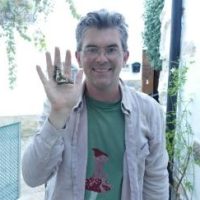
Florent Prunier
Περισσότερες πληροφορίες
Asociación de Educación Ambiental El Bosque Animado / Genal Field Station
aeaelbosqueanimado.info@gmail.com
Προφίλ
Florent Prunier, is a French biologist with over 25 years of experience in ecological research, conservation, and environmental education. Based in Andalusia, Spain, he holds a Master of Science and specializes in entomology, particularly Odonata and Orthoptera. Prunier has contributed to significant projects like the European Red List of Odonata for the IUCN and the EMBAL project for European biodiversity monitoring. As the founder of G3 Guides, he offers specialized nature tours across Spain. Prunier is a passionate advocate for citizen science, actively promoting public engagement in natural history and biodiversity monitoring. He coordinates the Genal Field Station, where he receives students and volunteers interested in Mediterranean ecology. Through this project and his work with the Environmental Education Association “El Bosque Animado,” Prunier bridges scientific research with public education. He regularly presents at international conferences and involves the public in ecological projects, demonstrating his commitment to both scientific advancement and public outreach in ecology.
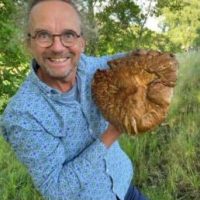
Baudewijn Odé
Περισσότερες πληροφορίες
IUCN Grasshopper Specialist Group, FLORON Plant Conservation Netherlands
baudewijnode@gmail.com
Προφίλ
Trained as an ecologist, Baudewijn became a botanist in the Netherlands, monitoring wild plants and managing a volunteer network of botanical experts at FLORON. His main expertise is now in invasive alien species. Since 1990, he has studied grasshopper songs, starting in the Netherlands, but growing into a European expert. Since 1990 he has built a collection of about 15,000 sound recordings of Orthoptera, which are gradually being made publicly available through xeno-canto.org. His recordings are frequently used in scientific publications. He aims to raise awareness of Orthoptera and Orthoptera conservation, especially using their fascinating bioacoustics behavior. Aside from the above, he is a Red List Coordinator of the IUCN Grasshopper Specialist Group, helping people to assess Orthoptera species for the IUCN Red List.
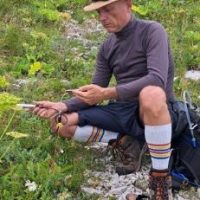
Filippo Maria Buzzetti
Περισσότερες πληροφορίες
Fondazione Museo Civico di Rovereto
buzzettifilippo@fondazionemcr.it
Προφίλ
Filippo Maria Buzzetti graduated in Natural Sciences and earned a PhD in Crop Protection at the University of Padova. He is a teacher of mathematics and science in middle school, collaborating as an entomologist with the Fondazione Museo Civico di Rovereto. Member of the IUCN Grasshopper Specialist Group, he curated the Italian species for the European Red List of Grasshoppers, Crickets and Bush-Crickets. His research fields are the bioacoustics and systematics of Orthoptera and the systematics of the Gerromorpha Heteroptera in Europe, the Neotropics, Southeast Asia and Africa. He authored or coauthored many scientific papers and books.
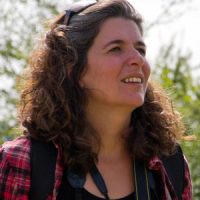
Βασιλική Κατή
Περισσότερες πληροφορίες
University of Ioannina, Department of Biological Applications & Technology. BCL-Biodiversity Conservation Lab
vkati@uoi.gr
Προφίλ
Kiki is a biologist with a PhD on biodiversity conservation. She has expertise in the taxonomy and conservation ecology of a wide range of animal groups, from grasshoppers and butterflies to herpetofauna, birds and large mammals. She builds up primary biodiversity databases, with a special focus on Mediterranean mountainous ecosystems. She currently coordinates research projects on sustainable livestock farming on the high mountains, forest biodiversity maintenance, sustainable spatial planning of windfarms and threatened orthoptera conservation. Her Lab delivered the roadless map of Greece, upon which a roadless legislation was built. The Lab has a consistent focus on providing solutions to major conservation problems and coordinates “apollo” the national voluntary citizen-science scheme for monitoring Greek butterflies.
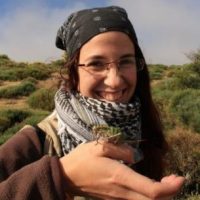
Marta Villasán Barroso
Περισσότερες πληροφορίες
Observation International / AEA El Bosque Animado
marta@e-coambiental.com
Προφίλ
Marta Villasán Barroso is a Spanish biologist from Badajoz, with a BSc in Biology and an MSc in Biodiversity Conservation. She has extensive experience in Environmental Education and has worked on international projects with UNESCO in Paraguay and LIFE projects in Portugal and Spain. Currently, Marta runs her own environmental consultancy, e-Coambiental. In addition, she works with NGOs like Bioinnova, Madretierra, and El Bosque Animado, contributing to conservation and environmental education projects. Her work focuses on biodiversity conservation, ecosystem restoration, CSR, and impact compensation. Marta delivers environmental training courses and monitors dragonflies, pollinators and other invertebrates. As a member of Observation.org Spain, she participates in citizen science and is involved in the TEOSS program, demonstrating her commitment to environmental education.
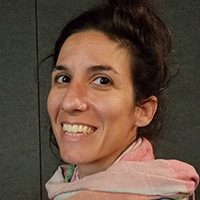
Δρ. Ντίνα Ζωγράφου
Περισσότερες πληροφορίες
University of Ioannina, Department of Biological Applications & Technology. BCL-Biodiversity Conservation Lab
dina.zografou@uoi.gr
Προφίλ
Dina was, until recently, a postdoctoral researcher at the Ecology and Evolution division, University of Bern (PhD 2015: University of Ioannina). Her research focuses on investigating and predicting how climate change leads to the decline of endangered species, changes in species communities, and how it modifies species interactions and impacts the ecosystem functions they provide. Her research is field-oriented and combines integrated methods, including landscape and laboratory experiments. In her previous postdoc she clarified long-term population trajectories for an extremely rare butterfly species (Speyeria idalia idalia) and was able to show how species traits anchor a dynamic pollination network. She is a lecturer under contract in University of Ioannina, teaching the course “Fauna of Greece: terrestrial invertebrates”.
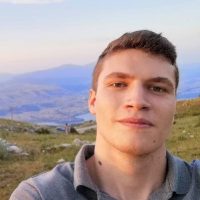
Αποστόλης Στεφανίδης
Περισσότερες πληροφορίες
University of Ioannina, Department of Biological Applications & Technology. BCL-Biodiversity Conservation Lab
stefapostolis@gmail.com
Προφίλ
Apostolis is a PhD student specializing in the ecology and conservation of endemic and threatened Orthoptera species. A biologist by training, he conducted his diploma thesis on the diversity patterns of montane Orthoptera communities. Since 2021, he has worked as a freelancer on research projects focused on monitoring and conserving rare Orthoptera in protected areas, examining their relationships to microhabitat preferences. He is an IUCN assessor for Orthoptera in Greece and will contribute to the Greek National Orthoptera Monitoring in 2025. In 2023, he received an excellence grant from the Hellenic Foundation for Research and Innovation (HFRI) for his PhD research on Orthoptera ecology and conservation
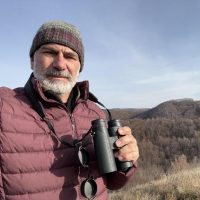
Haritakis Papaioannou
Περισσότερες πληροφορίες
Vikos-Aoos UNESCO Geopark
agriogido@hotmail.com
Προφίλ
Haritakis is a Biologist (M.Sc. in Conservation Biology, Ph.D. Thesis on Balkan chamois) and Ichthyologist. He has been involved in nature conservation and wildlife management for more than 25 years, as a field researcher in projects for brown bears, Balkan chamois, amphibians, raptors, Natura 2000 habitats and protected areas management and conservation. He has been involved in nature and culture interpretation, authored 6 books and several scientific publications. He has participated in more than 60 environmental studies including field research, mainly in the wider Pindus Mountain range. Recently, he compiled the National Action Plan for Balkan Chamois in Greece, and he is the coordinator of Vikos-Aoos UNESCO geopark.
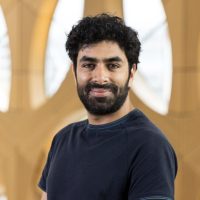
Burooj Ghani
Περισσότερες πληροφορίες
Naturalis Biodiversity Center
burooj.ghani@naturalis.nl
Προφίλ
Burooj Ghani is a Postdoctoral Fellow in AI and Biodiversity at the Naturalis Biodiversity Center in the Netherlands. His works on the integration of sound-based machine learning with ecological conservation efforts. He is dedicated to developing innovative sound-based methods for detecting and classifying animal vocalizations. Dr. Ghani obtained master’s and a PhD in Computer Science from the University of Göttingen. During his graduate studies, he ventured into the realm of bioacoustics, particularly focussing on classification of bird species, investigated the impact of species selection on classification outcomes, and delved into algorithmic analysis of intra-species song variations.
Provisional program
Day 1
- Arrival at Konitsa
- Welcome dinner
Day 2-5
- Morning/afternoon: Fieldwork on sound recordings and Lectures.
- Evening: Lab work on sound data analysis, Night excursions
Day 6
- Morning: Lab work accomplishment.
- Afternoon: Lecture and overview of summer school.
- Evening: Students’ projects presentation. GSS-OSS evaluation and closing session (certificates of attendance)
Day 7
Departure from Konitsa
Lectures
L1: Training the European Orthoptera Sound System (TEOSS)
Florent Prunier [AEAEI Bosque Animado]
Florent Prunier [AEAEI Bosque Animado]
The TEOSS (Transforming European Orthoptera Sound System) project is a scientific initiative aimed at improving Orthoptera species recognition in Europe through sound recordings. With 1,229 Orthoptera species identified, of which 696 (66%) produce meaningful sounds, the project focuses on training volunteers, creating a meta-database, and developing automatic recognition models currently achieving 60% accuracy. Its objectives encompass biogeographical research, soundscape analysis, conservation efforts, citizen science, and acoustic identification technologies, with a particular emphasis on Mediterranean regions and capturing sound frequencies between 3 and 120 kHz. This introduction will review the milestones of the project and introduce the main characteristics of the Orthoptera group.
L2: Empowering Nature Monitoring through Citizen Science
Marta Villasán Barroso [Observation International, AEAEI Bosque Animado]
Marta Villasán Barroso [Observation International, AEAEI Bosque Animado]
Observation.org emerges as a fundamental platform for citizen science, demonstrating significant impact with its annual collection of 32 million observations. The TEOSS (Training for the European Orthoptera Sound System) project is an exemplary case study, illustrating the synergistic potential of collaboration between professional researchers and citizen scientists. The presentation explains how TEOSS aims to strategically use Observation.org’s extensive network of observers to increase the database of European orthoptera sounds that can be used to feed the TEOSS AI model. The protocol for uploading observations to Observation.org and linking to sound files in Xeno Canto is outlined, thus showcasing an innovative methodology for data collection and dissemination in the scientific community. The overall goal is to demonstrate how initiatives such as TEOSS substantially contribute to the advancement of scientific knowledge through the integration of citizen participation and cutting-edge technologies. This approach not only improves data collection, but also encourages public participation in scientific efforts, potentially leading to more comprehensive and diverse data sets in the field of Orthoptera research.
L3: Recording techniques and recording quality
Baudewijn Odé [IUCN Grasshopper Specialists Group]
Baudewijn Odé [IUCN Grasshopper Specialists Group]
What do you need to record Orthoptera, and what makes a good sound recording? There are many ways to record sound—even a smartphone can capture decent audio. The quality you need depends on your purpose. Are you recording for fun, personal learning of species, or scientific research? A loud cricket may require less precision than an ultrasonic singer. High-end recording equipment can be costly, but there are budget-friendly options to get started. In this presentation, you’ll explore key recording tools, from affordable choices to professional gear, helping you find the right setup for your needs.
L4: Sound production in Orthoptera
Filippo M. Buzzetti [Fondazione Museo Civico di Rovereto]
Filippo M. Buzzetti [Fondazione Museo Civico di Rovereto]
L5: Analyzing sound recordings
Baudewijn Odé [IUCN Grasshopper Specialists Group]
Baudewijn Odé [IUCN Grasshopper Specialists Group]
What are the main characters in the songs of Orthoptera and how to view and measure them digitally? Orthoptera songs are defined by pulse rate, frequency, duration, and rhythm, all of which can be analyzed using audio software. Various programs allow you to visualize, edit, and measure recordings, with spectrograms revealing frequency details and slowed playback aiding in detecting subtle or ultrasonic elements. Software also enables cropping, noise reduction, and measurement of time and frequency characteristics. Freeware solutions are often sufficient for analysis, with “Audacity” being an excellent choice for beginners. More advanced tools offer deeper insights, but basic features are enough for effective study and species identification.
L6: Orthoptera fauna of Epirus
Apostolis Stefanidis & Konstantina Zografou (BCL, University of Ioannina)
Apostolis Stefanidis & Konstantina Zografou (BCL, University of Ioannina)
How many Orthoptera species inhabit Greece and how many Epirus? The lecture will present a panorama of the local Orthoptera species fauna, their habitats and tips for their identification in the field.
L7: Deep learning for animal sound: challenges and opportunities
Burooj Ghani (Naturalis Biodiversity Center)
Burooj Ghani (Naturalis Biodiversity Center)
This talk will explore how AI and bioacoustics can support biodiversity conservation, despite the challenges of deploying these systems across diverse environments. Deep learning techniques for analyzing animal sounds, with a focus on insect monitoring, will be discussed. Key obstacles in real-world deployment will be addressed, along with strategies to scale these approaches for greater impact.
L8: Conserving European Orthoptera fauna
Prof. Vassiliki Kati (BCL, University of Ioannina)
Prof. Vassiliki Kati (BCL, University of Ioannina)
The lecture will integrate the work of GSS-OSS in a broader conservation context. We will discuss the threats of European Orthoptera, the main legal and policy tools we dispose as scientists to halt their decline, focusing on the provisions of the recent Nature Restoration Regulation. An interactive discussion on the threats and conservation actions known by the participants will follow to close the section.
Fieldwork
F1: Fieldwork at Konitsa surroundings
Baudewijn Odé, Filippo M. Buzzetti, Florent Prunier
Baudewijn Odé, Filippo M. Buzzetti, Florent Prunier
A two-hour fieldwork in the surroundings of the venue is planned, in the former agricultural fields of “Anagnostopoulio Center”. Three student groups will be formed. You will grab and test different gears, with the help of our three tutors. The session aims at your familiarization with the sound equipment, exploring how it functions and conducting the first recordings. Do your best! A Questions & Answers (Q&A) session after lunch will consolidate your first field experience.
F2: Fieldwork at Zaravina Lake and Ch. lacustris pond
Baudewijn Odé, Filippo M. Buzzetti, Florent Prunier
Baudewijn Odé, Filippo M. Buzzetti, Florent Prunier
Starting this morning session, after a short bus trip (40 min), we will reach Lake Zaravina, a small (30ha) but beautiful lake, creating humid local conditions in the surrounding grasslands. During the course, we will follow a strict protocol to obtain a diverse range of Orthoptera sound recordings. Only well-identified and properly annotated recordings are suitable for automatic species recognition. To ensure accuracy, we will encourage collecting photographic material or other forms of evidence for identification, along with detailed metadata. We will then move to a temporary pond at agricultural land, where the famous Epirus dancing grasshopper (Chorthippus lacustris) holds a small population, for further recordings.
F2_n: Night Walk near Aoos river
Baudewijn Odé, Filippo M. Buzzetti, Florent Prunier
Baudewijn Odé, Filippo M. Buzzetti, Florent Prunier
Students can follow a night session, recording more inconspicuous nocturnal species in a path near Aoos river, after the stone bridge of Konitsa. The site will be reached on foot.
F3: Fieldwork at Zagori: Stone Forest of Monodendri
Baudewijn Odé, Filippo M. Buzzetti, Florent Prunier
Baudewijn Odé, Filippo M. Buzzetti, Florent Prunier
We will conduct a two-hour fieldwork with Orthoptera recordings, following the protocols of F2. The stone forest of Monodenri is a unique open forest in a carstic geological bedrock with special rock formations and unknown Orthoptera fauna to be discovered!
F3_n: Night Walk at Kallithea agricultural fields
Baudewijn Odé, Filippo M. Buzzetti, Florent Prunier
Baudewijn Odé, Filippo M. Buzzetti, Florent Prunier
We will travel by bus (15 min) towards Kallithea village. We will stop before the village to follow a short path (400m) towards a chapel, through abandoned agricultural fields and scrubland. A one-hour night walk, recording more inconspicuous nocturnal species.
F4: Fieldwork at Grammos mountainous grasslands (Aetomilitsa)
Baudewijn Odé, Filippo M. Buzzetti, Florent Prunier
Baudewijn Odé, Filippo M. Buzzetti, Florent Prunier
We will move by bus (1.30h) to reach Grammos Mt to the north. We will conduct Orthoptera recordings at the mountainous grasslands above 1,400 m near the village of Aetomilitsa, following the protocols of F2.
F4_n: Night Walk at Saint Athanasios chapel
Baudewijn Odé, Filippo M. Buzzetti, Florent Prunier
Baudewijn Odé, Filippo M. Buzzetti, Florent Prunier
The team will move by bus (15 min) to reach Saint Athanasios chapel. A one-hour night walk, recording more inconspicuous nocturnal species following a path towards the chapel, through a grassland with sparse old-growth oaks.
Laboratories
The course comprises five labs, one for every day, lasting 2-3 h each. The first short lab is an interactive session aimed at equipment use problem-solving. All the following lab sessions comprise editing of sound recordings, analysis and upload of recordings to Xeno-canto, including all relevant metadata. All recordings collected in the morning field sessions as well as from the previous night walks should be treated in the labs. The objective of the labs is to consolidate the knowledge learned during the fieldwork, contribute valuable data for research and species recognition.
Seminars
S1: Integrated seminar: Vikos Aoos Global UNESCO Geopark
Haritakis Papaioannou [Vikos-Aoos Geopark/Epirus Development Society]
Haritakis Papaioannou [Vikos-Aoos Geopark/Epirus Development Society]
Our team will start a nice trip with small stops (1.30h) towards the famous Vikos gorge. Dr. H. Papaioannou, biologist and coordinator of the Vikos-Aoos Geopark will accompany us on a unique tour presenting the geological value of the Global UNESCO Geopark, as well as the local history and culture of Konitsa and Zagori. The bus tour will end at the “stone forest”, a particular semi-open forest intermingled with rock tower formations at the edge of Vikos Gorge. Keep distance to the edge! Vikos Gorge is one of the deepest gorges of the world reaching 900 m in depth!
S2: Students present their research projects
Vassiliki Kati (Coordinator)
Vassiliki Kati (Coordinator)
In this session, the floor is yours. As many of you might already work with Orthoptera or sounds in nature or both, you may wish to share your project with your peers. A mini congress of 10-12 min presentations of participants is launched. It is voluntary. You are engaged only if you wish to. Any kind of Orthoptera research, without necessarily involving acoustics is eligible, and any kind of research involving sound recordings, without necessarily involving Orthoptera. If we have many applications, we should choose the most relevant. You will be asked on the registration form, if you would like to present your project, and provide a title and a short abstract (100 words). That would be nice to create the next network of young Orthopterologists and sound experts in Europe! Dare! We wait for your input!
Organization

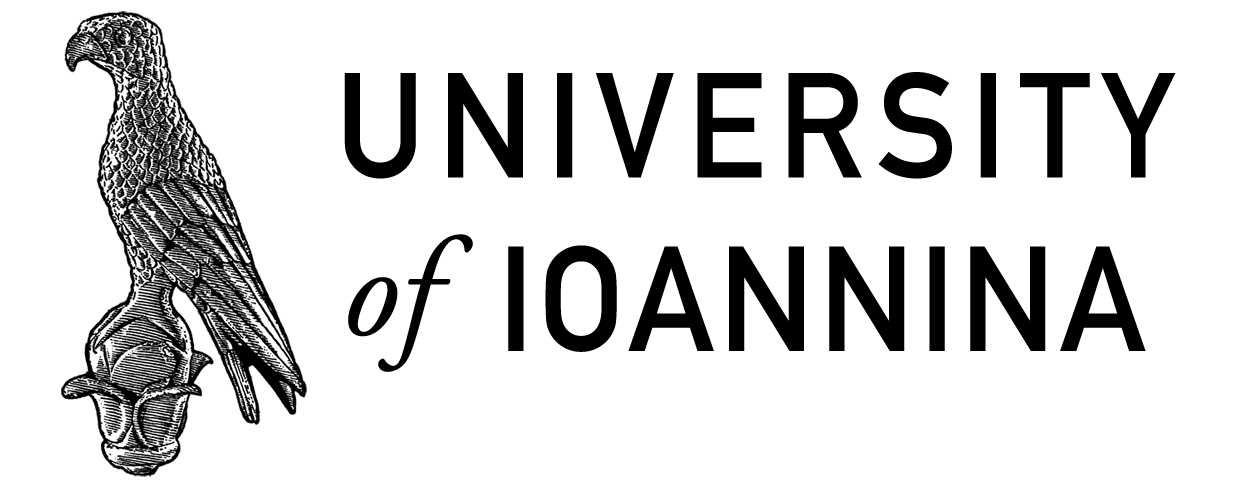
The summer school is organized by BCL (Biodiversity Conservation Lab) at the Department of Biological Applications and Technology του Πανεπιστημίου Ιωαννίνων.
Prof. Βασιλική Κατή, Professor of Biodiversity Conservation and Head of BCL.
Δρ. Konstantina Zografou, post-doctoral fellow.
Αποστόλης Στεφανίδης, PhD candidate.
Konstantina Nasiou, PhD candidate.
ECTS
The course corresponds to 2 ECTS. An official certificate will be sent to successful attendees by the University of Ioannina (Center for Training and LifeLong Learning of the University of Ioannina).
Funding and support




The event is organized in the frame of TEOSS Project: “Training the European Orthoptera Sound System”, including four summer schools on this topic in Spain, Italy and Greece. It is part of the TETTRIs project (Transforming European Taxonomy through Training, Research and Innovations), which is funded by European Union’s Horizon Europe Research and Innovation program (Grant Agreement Number 101081903).
Η municipality of Konitsa kindly supports the event by offering accommodation in its students’ hostel.
Η Education Center for Environment and Sustainability of Konitsa offers the venue (lecture hall and lab rooms).
Η Vikos-Aoos Unesco Global Geopark offers a guided tour and information material
Useful info
What to bring with...
- Bring your laptop and writing materials, such as a field notebook, pen and pencil.
- Make sure to have your field equipment: a small backpack for the field sessions, mountaineering/field boots, water bottle, field clothes (T-shirts, light jacket, raincoat, hat, sunglasses), sunblock and mosquito protector. Check the weather before coming.
- Take your swimsuit and a towel. Aoos river is ideal for summer swimming.
- Be responsible and have medication in cases of allergies or other medical conditions.
- It is also recommended you to:
- Bring your smartphone and your own headphone (normal jack) to be able to listen while recording (beware we will not provide headphones).
- Setup an account in Xeno-canto (web).
- Install App ‘Echo Meter’ by Wildlife acoustic (on your smartphone).
- Install App ‘Wave Editor’ by LLC.
- Check USB type in the smartphone (new Echometers have USB C; former micro-USB).
- Install R and Rstudio on your pc.
- Set up an account on Observation.org (web).
Cash or card?
Visa and bank cards are used all over the country. However, it is advisable to have also cash with you, as in some local shops in the villages, or in the local festival cash is the main payment method.
Travel to Konitsa
You should first reach Ioannina city. There is no train connection in Epirus region. Three bus itineraries per day connect Ioannina to Konitsa (60 min). Let’s see now how to reach Ioannina.
- You can take a flight to Ioannina (King Pyrros airport), connected with international airports via Athens. This is the most direct option, but it is usually expensive.
- You can take a flight to Athens airport (El. Venizelos) and then reach Ioannina by bus (416 km, ~4.30 h).
- You can take a flight to Thessaloniki airport “Makedonia” (SKG) and then take a bus to Ioannina (261 km, ~3h)
- You can take a flight to Preveza International Airport (Aktion village), which offers quite cheap international charter flights in summer. You should then book a bus for your transfer to Ioannina (113 km).
- You can take a flight to Corfu island, towards the Corfu International airport “Ioannins Kapodistrias”, equally offering cheaper charter summer flights, but it involves traveling by boat (~1.30 h) and then by bus to Ioannina (Igoumenitsa Port-Ioannina: 78km)
Ioannina Airport “King Pyrros”: https://ioanninaairport.eu/
Athens Airport “Venizelos: (ATH): https://www.athens-airport.info/
Thessaloniki Airport “Makedonia” (SKG): https://www.skg-airport.gr/en
Preveza International Airport (Aktion): https://www.pvk-airport.gr/en/
Corfu Airport (CFU): https://www.cfu-airport.gr/en
Athens Bus station (http://ktelattikis.gr/en/)
Thessaloniki Bus station (https://ktelthes.gr/en/)
Ioannina Bus station https://ktelioannina.gr/en/
Olympic Airways (www.OlympicAir.com)
Aegean Airlines (www.aegeanair.com)
Join us in the heart of Vikos-Aoos Global UNESCO Geopark
for a unique summer school experience!
Apply now by clicking the link below.
You need to upload short text about your profile, and motivation (each of up to 500 words), as well as the title and abstract of your presentation (optional). It takes 5 min!
Links
- Download the material for the Greek Orthoptera fauna identification from the folder “Orthoptera identification_pdfs_Share” εδώ
- Learn about Orthoptera sounds at TEOSS webpage εδώ
- Want to learn more about TETTRIs project? Check εδώ
- Xeno-canto platform: https://xeno-canto.org/
- Learn about the experience of our students during the First European Summer School on Orthoptera Taxonomy and Conservation, in Konitsa at July 2023 εδώ
- Want to learn more about Northern Pindos National Park? Check εδώ
- See a panorama of landscapes in Vikos-Aoos Global UNESCO Geopark εδώ
- A video spot for Konitsa εδώ
CONTACT

Αποστόλης Στεφανίδης, Biodiversity Conservation Lab, University of Ioannina.
email: stefapostolis@gmail.com
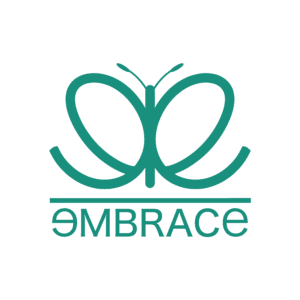
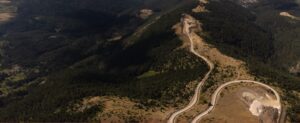
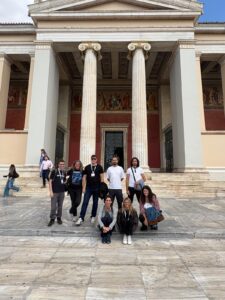
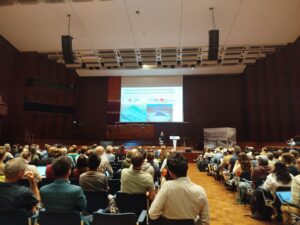
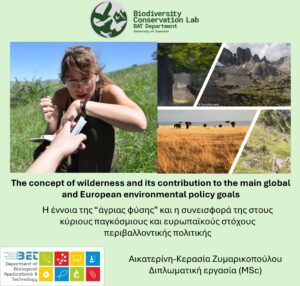
Social program
The team will have a group dinner at the central square of Konitsa (near the bus stations for the late-arrivals…).
Free time for a cold drink in the open-air pubs of Konitsa.
Group lunch at a restaurant near Voidomatis river, famous for its trout dish. With a length of 15km, Voidomatis is a tributary of Aoos, and one of the cleanest, coldest (4oC) and most beautiful rivers of Europe. What is best after a hot fieldwork day?
After a short bus trip (20min) from the “stone forest” back to Monodendri village, it is time for a traditional lunch at the central square of Monodendri. We will taste the famous Zagori’s traditional cheese pie under the name “Kassiopita”. Free time will be allowed to enjoy the local architecture, or visit the famous Monastery of Saint Paraskevi (15 min walk) dated from 1413 and belonging to the Patriarchate of Constantinople, with a splendid view of Vikos Gorge or visit the photo exhibition at Rizarios Exhibition Center (entrance with a ticket around 5€). Back to Konitsa venue for a little rest and labwork! The same night, we will go near Kalithea village and have dinner at the local tavern, to have an idea of how cozy non-touristic spots can be as well!
After a one-hour night walk at Saint Athanasios chapel, the bus will wait for us to drive us to the nearby village of Piklari (or Pigi). It is a great religious festivity in honor of Agia Paraskevi (Saint Paraskevi) and this involves a traditional fiesta in the village square, with local music (klarino), wine, local dances and souvlaki. It is an event that you must experience. [Food/drinks costs not covered].
If time allows it, we could pay a short visit to the wine museum of Konitsa. Closing session with certificates of attendance. This is the last night; we party altogether somewhere in Konitsa or near the river.
RESULTS
The sampling sites can be downloaded (Google Earth-kmz file) εδώ
Lectures can be downloaded as pdfs εδώ